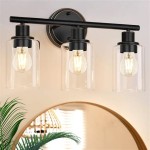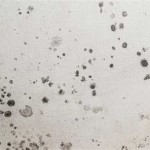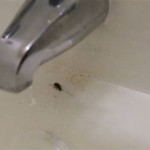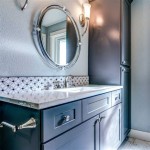Anti-Mold Paint for Bathrooms: A Comprehensive Guide
Bathrooms are notorious breeding grounds for mold and mildew due to their humid and warm environments. Mold not only poses a health risk, but it can also damage your bathroom's aesthetics. To combat this problem, anti-mold paint has emerged as an effective solution, offering superior protection against these unwanted guests.
Understanding Anti-Mold Paint
Anti-mold paint contains fungicides and mildewcides, which are designed to kill existing mold and prevent future growth. These paints are often formulated with a low pH level, making them inhospitable for mold to thrive. Additionally, some anti-mold paints incorporate moisture-resistant technology to minimize water absorption and create a less favorable environment for mold to settle.
Choosing the Right Anti-Mold Paint
When selecting an anti-mold paint, consider the following factors:
- Bathroom conditions: Evaluate the severity of mold growth and the moisture levels in your bathroom.
- Paint type: Choose a paint type compatible with your bathroom's surface, such as latex or oil-based paint.
- Coverage: Ensure the paint provides adequate coverage to prevent mold from resurfacing.
- Certifications: Look for paints certified by reputable standards bodies like Green Seal or EPA.
Preparing Your Bathroom for Painting
Before applying anti-mold paint, prepare your bathroom thoroughly:
- Remove existing mold: Clean moldy surfaces with a mold-killing solution and let them dry completely.
- Repair sources of moisture: Fix any leaks or ventilation issues that contribute to high humidity levels.
- Sand and prime: Smooth down and seal any uneven surfaces. Apply a primer to ensure better paint adhesion.
Applying Anti-Mold Paint
- Ventilate: Ensure proper ventilation during and after painting.
- Apply two coats: Allow the first coat to dry thoroughly before applying the second coat for maximum effectiveness.
- Avoid overbrushing: Overbrushing can weaken the paint film and compromise its anti-mold properties.
- Clean tools: Regularly clean your painting tools to prevent mold transfer.
Maintenance and Prevention
Maintaining the effectiveness of anti-mold paint is crucial:
- Regular cleaning: Wipe down bathroom surfaces frequently with a mild cleaning solution.
- Control moisture: Use exhaust fans or dehumidifiers to reduce moisture levels.
- Inspect periodically: Check for signs of mold regrowth and address any issues promptly.
- Repaint as needed: Over time, paint can deteriorate, so consider repainting your bathroom every few years to maintain its anti-mold protection.
Conclusion
By utilizing anti-mold paint, you can effectively combat mold growth in your bathroom, creating a healthier and more aesthetically pleasing environment. With proper paint selection, preparation, and maintenance, you can enjoy a mold-free bathroom for years to come.

Odour Less Anti Mould Ceiling White Nippon Paint Singapore

Nippon Paint Odourless Anti Mould Ceiling White 5l Interior Wall Paints Horme Singapore
What Is The Best Type Of Paint To Use In Bathroom That Would Prohibit Mold Quora

Ronseal Anti Mould Paint White Matt 2 5ltr Fix

How To Get Rid Of Mould In Bathroom Celtic Sustainables

How To Prevent Mould In The Bathroom With Anti Paint

Kitchen And Bathroom Paint Anti Mold Asipo By Flag Paints

Polar Anti Mould Paint 500ml Brilliant White Matt Finish Prevent Control On Internal Walls Ceilings Diy At B Q

Thermapaint Anti Mould Paint Treatment Fungal

Zinsser Perma White Mold Mildew Proof Interior Paint Page
See Also







